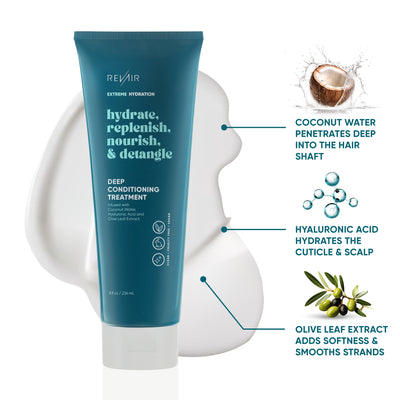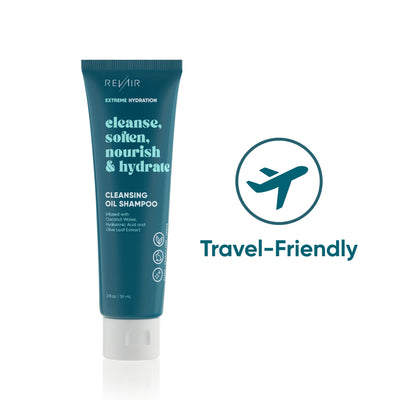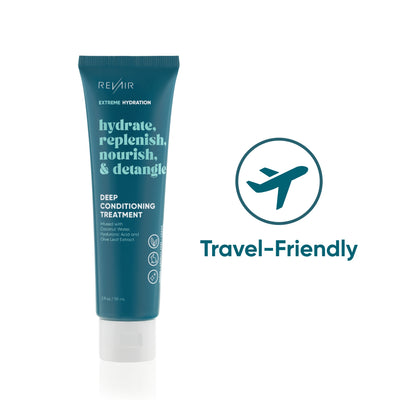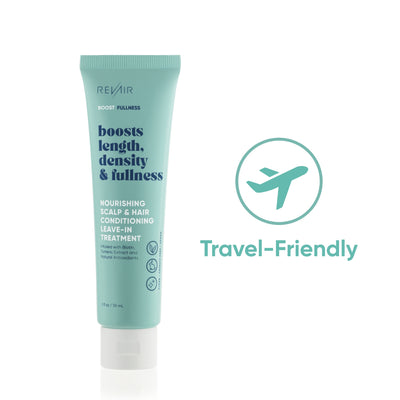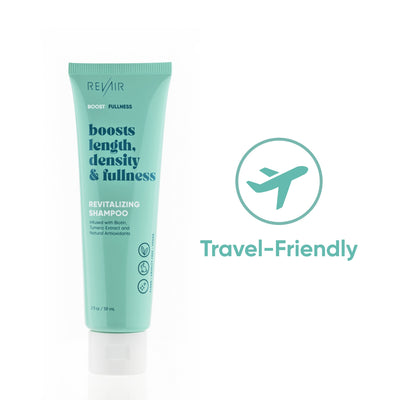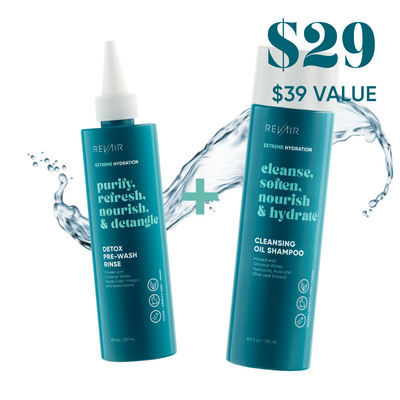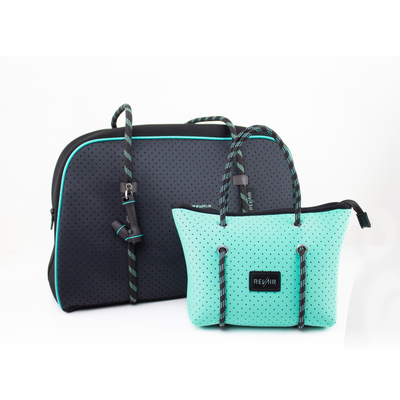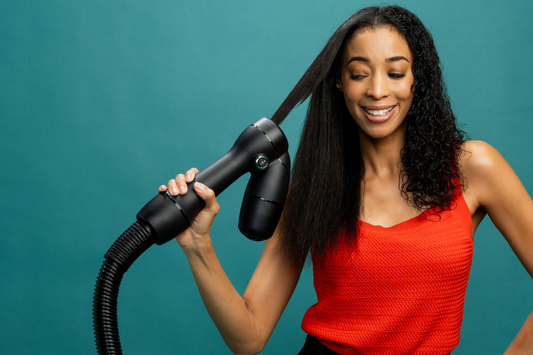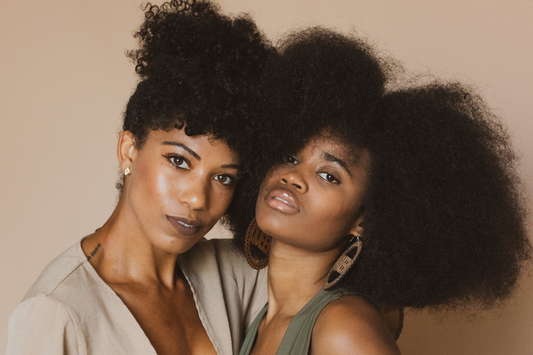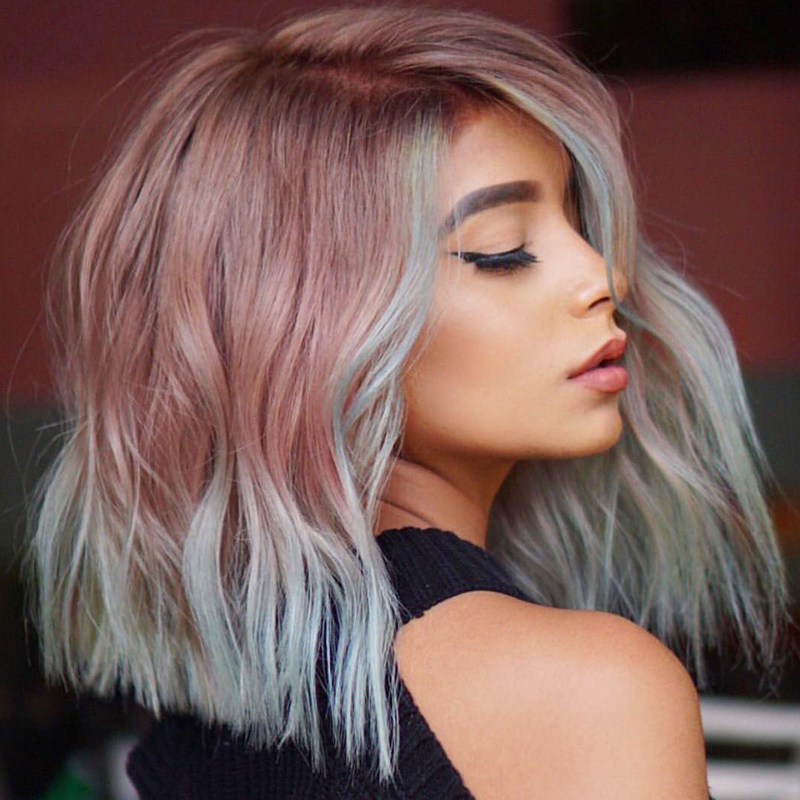
Hair Fibers Deserve Special Treatment to Remain Vibrant, Strong and Healthy. Here's why:
We all have that friend with perfect hair that seems to glisten in the sunlight and flow smoothly from root to tip. Then, there are the people you pass on the street with frizzies, flyaways, and hair as rough as carpet fibers.
Surely, you want to be that first girl — the one with vibrant, healthy hair — not the girl who becomes known for her unruly locks.

The difference between strong, luxurious hair and damaged hair comes down to how the hair is treated.
Pamper your hair with the proper treatment and care, and it will reward you with good looks. Sadly, many people unknowingly damage their hair with harsh and outdated styling practices.
If your hair is damaged and dry, or you just want to make sure it doesn't become damaged, then it pays to learn a bit about your hair fibers and how to keep them healthy.
The Structure of Hair Fibers
One hair may not look like much on its own, but it is actually pretty complex. Don't worry, though. You don't need a college degree in biology to understand basic hair structure.
The part of your hair that sticks out beyond your head is called the hair shaft, and it has three layers. They're called the cuticle, cortex, and medulla.
The Cuticle
The cuticle is the part of the hair that you actually see. It's like a tough, outer covering for your hair, and it has a scaly texture. When the cuticle's scales are all laying flat, that strand of hair is smooth, sleek, and shiny.
When the cuticle scales become raised, the hair becomes coarse, dry, dull, and brittle. So, as you can probably guess, it's the cuticle that you really need to focus on when worrying about your hair's health.
Practices that raise the cuticle are damaging and bad. Those that keep the cuticle smooth and sleek are healthy and good.
The Cortex
The cortex is the middle layer of your hair strands. It's the thickest layer, and it's also where your hair's pigments are found. If you have your hair dyed or bleached, the chemicals used are making changes to the hair's cortex.
In protecting your hair from damage, you mostly need to worry about the cuticle.
But if the cuticle becomes raised and damaged and you keep up with those bad styling practices… well… then you might damage the cortex, too.
And a damaged cortex leads to hair that breaks and splits really easily, which is not the look you want to sport.
The Medulla
The medulla is the innermost part of your hair shaft. If your hair were a Twinkie, the medulla would be the cream. The coarser and darker your hair, the thicker the medulla.
Some blonde hair does not even have a medulla! Luckily, you don't have to worry too much about how your hair care practices affect your hair's medulla since it's nicely protected by your hair's other layers.
Practices That Can Damage the Cuticle
So far, we've mentioned that bad hair treatments and practices can damage the cuticle and leave your hair looking frizzy and dry.
Here's where we tell you what those practices actually are. You might be surprised by some of the treatments on this list.
A few of them are hair care tactics your mother may have taught you in childhood — so breaking free and changing your ways may be tough, but definitely worth it if you want healthy, vibrant hair.
Bleaching and Chemically Straightening Your Hair

That platinum blonde, beachy look is oh-so-cravable, but achieving it can actually be really damaging to your hair.
There's a reason people with bleach-blonde hair are known for having fuzzy locks; it's really hard to bleach hair that light without damaging the cuticle.
When you bleach your hair, the bleaching agents, usually hydrogen peroxide and ammonia, have to penetrate the cuticle and reach the cortex of your hair to remove the pigment.
Do this once or twice with a mild bleaching solution, and you'll probably be okay. Bleach your hair again and again? Well, you'll be blonde — but probably with broken hair that resembles a jute rug.
Perms and chemical straightening procedures have a similar effect. Leave them on too long or apply them too often, and you'll damage the cuticle, leading to coarse and frizzy hair.
Irresponsible Heat Styling
There's nothing like a good blow-out to make you feel sexy. But heat styling can do more harm than good if you're not careful.
Turning your blow dryer up to the highest setting may dry your hair fast on a busy morning, but it will also raise your cuticle and cause damage over time.
Similarly, using a curling iron or hair straightener too often or at too high of a setting is damaging. You might have smooth, straight locks like Jennifer Garner today, but you'll look like a poodle in a few months' time.
Waiting Too Long Between Cuts
Visiting the hairdresser takes time, and the price of a cut has gone up in the past few years. But delaying your haircutting appointment is not doing your hair any favors.
Each time you have your hair trimmed, your stylist removes split ends to prevent the splits from continuing to travel up the hair shaft. If you're one of those ladies who only gets a haircut once a year, you're going to have badly split ends and a lot of fluff each time you sit down in your stylist's chair.
Your parents may have taught you to be frugal, but skipping hair appointments is not a smart way to save. You'll end up paying more for repairative treatments in the end.
Brushing Too Harshly
You've got to brush out the tangles to get smooth, sleek hair — right? Wrong. If you're having to rip or pull at all when brushing, you're doing more harm than good.
This is a surefire way to break your hair fibers and cause damage to the cuticle. Brushing your hair while it is wet is also damaging. When your hair is wet, it is very fragile, and even the act of brushing can cause it to split and fray. Always comb your hair when it is wet to remove tangles.
Only use a brush on dry hair, and be as gentle as possible.
Sitting Out in the Sun
Sitting in the sun, perhaps even with lemon juice in your hair, is an old-fashioned technique to lighten your hair color. But this old-time practice is best left in the past. It's really damaging.
The UV radiation from the sunshine makes your hair cuticle dry, brittle, and scaly, and acidic additives like lemon juice make matters even worse! Just say"no" to this DIY lightening technique, and don't let grandma tell you otherwise.
Ways to Revive Damaged Hair
So how do you become that girl with healthy, vibrant hair that everyone envies? Do you have to cast heat styling aside forever, and say "no" to highlights or hair brushes?
Nope.
There's no need to be that extreme. Here are some easy, approachable ways to prevent hair damage — or maybe breathe new life into hair that's already looking a bit rough and dry from prior neglect.
Use Leave-in Conditioners
Look for a good, leave-in conditioner that is designed for your hair type. If you have coarser or curly hair, a leave-in oil treatment may even be helpful. Most leave-in conditioners are designed to be applied when your hair is wet, right after shampooing.
This way, they help remove tangles, so you can avoid pulling and damaging your hair while combing through it. Your hair will also be easier to brush when it is dry — no more ripping through tough tangles.
If you do wish to heat-style your hair, applying a leave-in conditioner beforehand will help protect your cuticle so the heat treatment does not damage your hair. There are even heat-protecting leave-in conditioners designed specifically for this purpose!
When applying a leave-in conditioner, always be sure to focus on the ends of your hair, rather than the roots. It's the ends that are most brittle and need the most protection.
Keep Up With Haircuts
Find a stylist you enjoy visiting and whose services are within your budget. This way, visiting for regular hair cuts every two or three months won't be a burden.
Your stylist will remove split ends as soon as they appear, so the damage doesn't get the chance to travel further up the hair shaft.
Shampoo With Cool Water
If you've ever had your hair professionally bleached or dyed, your stylist probably put you under a heat lamp for a time. This is because the heat opens your hair cuticle, allowing the dye to penetrate better.
Hot water does the same thing. It opens and roughens your hair cuticle. So when you shampoo your hair, it's best to use cool water, which will keep your cuticle closed and sleek.
No, you don't need to turn the shower so cold that you shiver — water that feels lukewarm or room temperature is good enough.
Choose Hydrating Shampoos and Conditioners
This tip is especially important if you're already noticing that your hair is a little fluffy or damaged.
It's also a good tip to follow if you heat-style often. Look for shampoos and conditioners labeled as "hydrating." They'll help keep your cuticle moist and flat, counteracting the damage that results from daily practices like brushing and curling.
Protect Your Hair From the Sun

You wear sunscreen to protect your skin from UV rays… but what do you do for your hair? If you're going to be out in the sun for hours on end and wearing a hat is not an option, there are UV-protection sprays that work really well.
Some leave-in conditioners even contain ingredients for UV protection. For the average summer day out gardening or running around, you can just wear a hat.
Leave Chemical Treatments to Professionals
Your local pharmacy may have several aisles of hair dyes, bleach preparations, and chemical straightening solutions. But that does not mean you should be using them! The products sold in drugstores are often pretty harsh on hair.
They can cause serious damage to your cuticle, especially if you leave them on longer than necessary.
Your hair stylist is professionally trained to choose dyes, bleaches, and other treatments that are compatible with your hair type. They also know exactly how to apply these chemicals and how long to leave them on, so you get beautiful hair — not hair that looks like it's been roughed-up with a nail file.
Does professional coloring cost more? Of course — but it's really the only safe way to get beautiful hair with less damage.
Use Kinder Heat Styling Tools, Like RevAir
You don't have to go without your blow-out or resort yourself to air drying your precious locks every time. But you should really think about ditching that 10-year-old hair dryer and upgrading to a kinder heat-styling tool, like RevAir.
RevAir is a new kind of hair dryer. It harnesses the power of suction to dry your hair in less time and with less friction than a standard hair dryer. By holding the hair straight and blowing air from root to tip, RevAir keeps your hair cuticle smooth and healthy.
You don't end up with a tangled mess to comb through in the end, so your hair suffers less brushing damage.
RevAir is healthy for all hair types, from straight to coily. You can adjust the settings as needed to ensure your locks come out smooth and sleek every time. Coarse hair requires a higher setting, whereas finer hair does best at a lower setting.
But even RevAir's highest setting is only 800 watts. Compare this to the 2,500 watts used by most standard hair dryers, and it's easy to see why RevAir is healthier for hair.
Also, since RevAir does such a good job of straightening while it dries, there's often no need to follow up with a straightening iron. This further saves your hair from damage. If you have curly hair, you may want to follow up with a flat iron, but this will just be a quick touch-up, so your hair will still be exposed to a lot less heat.
Simple Changes; Big Results
If you want vibrant, strong, healthy hair, then you need to take great care of your hair. Re-evaluate the way you've been caring for your hair, and ask yourself what changes you can make today for better hair health.
From staying out of the sun to switching to RevAir, just a few simple changes can transform your luscious locks.
